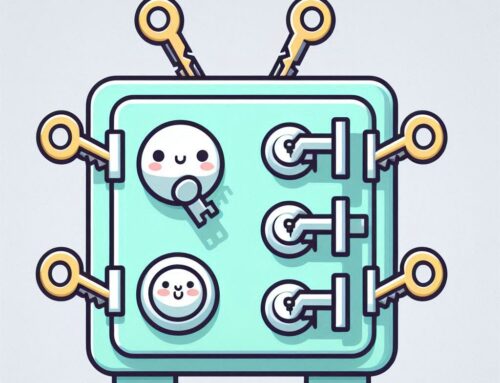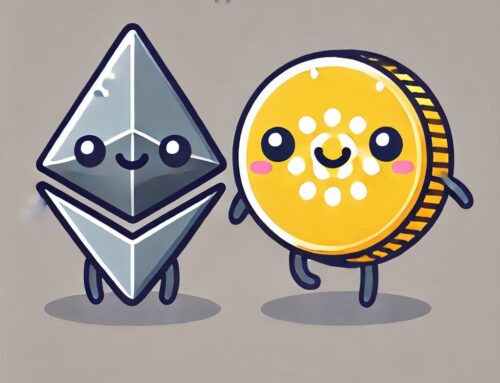Beyond the Hype: ADA, the Little Coin That Powers the Cardano Dream (It’s Not Just for Hodling!)
Alright, folks, let’s pull back the curtain and talk about ADA, the native cryptocurrency of the Cardano network. No, it’s not named after your eccentric aunt who collects porcelain dolls (although, that would be a pretty fun fact!). ADA is named in honor of Ada Lovelace, who is widely recognized as the first computer programmer.
Think of ADA as the lifeblood that courses through the veins of the entire Cardano ecosystem, powering transactions, fueling smart contracts, and even shaping the future of the network through decentralized governance. It’s far more than just another digital coin floating around the crypto-sphere; it’s the engine, the fuel, and the voting power all rolled into one neat little package. So, whether you’re a seasoned crypto veteran or a wide-eyed newbie, let’s embark on a fun and insightful journey to explore the power of ADA!
What is ADA, Anyway? (It’s Not Just Digital Bling!)
Before we get down to the details about how ADA actually works in the Cardano ecosystem, let’s take a moment to really understand what it is. In its simplest form, ADA is the native digital currency of the Cardano blockchain. It’s what’s used to power every process.
Digital Currency (But with Extra Perks!): ADA is a digital asset that exists on the Cardano blockchain, enabling users to transfer value directly with each other, without relying on intermediaries, which is a key feature that many crypto enthusiasts are drawn to. It’s like having a digital version of cash, but with added benefits like smart contracts and governance participation.
The Fuel of Cardano (Powering the Revolution!): It’s the “fuel” that powers the Cardano network, necessary for almost every interaction on the blockchain, from processing transactions to deploying smart contracts. Without ADA, the Cardano network simply wouldn’t function.
Named After a Legend (Respect Your Elders!): ADA is named after Ada Lovelace, recognizing her as a pioneer in the field of computer programming. This is a nod to the intellectual foundation upon which Cardano is built.
ADA can be earned through staking.
The Primary Utility of ADA: Powering the Cardano Network (It’s What Makes It All Go!)
ADA has several crucial functions within the Cardano ecosystem, far beyond simply being a means of exchange:
Transaction Fees (Paying Your Dues!): Like any other blockchain network, Cardano requires users to pay a small fee to process transactions, and these fees are paid in ADA, and help maintain the stability of the network. This fee is used to incentivize the network’s validators (stake pool operators), who are the entities that keep the system humming. It’s like paying a toll to use the Cardano highway, ensuring smooth traffic for everyone.
Staking and Rewards (Get Paid to Secure the Network!): ADA holders can stake their coins, which means they lock up their assets to help secure the network. In return, they earn rewards in the form of additional ADA, which are distributed on a recurring basis. It’s like putting your money in a high-yield savings account, allowing you to earn more while helping secure the network, which is truly a win-win scenario.
Access to the Ecosystem (The Key to the Kingdom!): ADA is required to interact with smart contracts, decentralized applications, and other services within the Cardano ecosystem. It’s like having the key that unlocks all the features of the Cardano world, allowing you to utilize and interact with all kinds of new technologies. Without ADA, it would be impossible to use these features.
Store of Value (Digital Gold? Maybe!): Like other cryptocurrencies, ADA can be used as a store of value and a speculative asset, meaning its value can fluctuate based on market demand. It’s like investing in a new technology, with the hope that its value will increase over time, which is why many people choose to hold ADA.
ADA and Governance: Shaping the Future of the Network (Your Voice Matters!)
One of the most innovative functions of ADA is its role in Cardano’s governance. ADA holders have a direct say in how the network is run, making it a truly decentralized and community-driven project. By using ADA to participate in governance, everyone is empowered to help guide the direction of the network.
Voting Rights (Cast Your Ballot!): ADA holders can vote on proposals for changes to the Cardano protocol. It’s like having a vote in the future direction of the Cardano network.
Project Funding (Funding the Future!): ADA holders can also vote on how funds in the treasury are allocated to different projects, which is a key step in building a thriving Cardano ecosystem. It’s like having the ability to decide which projects get the resources they need to thrive, and then seeing these projects come to life.
Decentralized Decision-Making (Power to the People!): Cardano’s governance model ensures that decisions are not made by a single entity, but by the community of ADA holders, making it a much more democratic system. It’s like having a democratic voting system to make important decisions, where everyone is empowered to have a say.
Voltaire Era (The Era of Community Control!): Cardano’s governance capabilities are being fully implemented during the Voltaire era, a specific phase of the Cardano development that’s focused on maximizing decentralization, and ensuring community control.
ADA’s Role in the Cardano Ecosystem: More Than Just a Coin, It’s the Key!
Beyond its core functions, ADA is essential for several other vital aspects of the Cardano ecosystem:
Smart Contract Interactions (Powering the DApps!): ADA is used to pay fees for interacting with smart contracts on the Cardano network, which helps ensure that they are efficient and do not use unnecessary resources. This means that ADA is required to use many of the decentralized applications that are built on the Cardano platform.
Native Token Creation (Creating New Assets!): Users can use ADA to create their own custom tokens on the Cardano blockchain, which makes it the underlying currency for most of the operations that occur on the network. This means that ADA is the main token used to mint new tokens, adding new value to the ecosystem.
Interoperability (Bridging the Gaps!): ADA can be used in bridges that facilitate transfers of assets between the Cardano network and other blockchains, allowing users to easily move value between different ecosystems. This means that ADA is essential for the interoperability of the Cardano blockchain, with other leading blockchains.
Community Building (Incentivizing Involvement!): ADA incentivizes community involvement through staking, rewards, and governance, creating a thriving and participatory ecosystem, where everyone is empowered to contribute, and to help Cardano grow. It’s like having an incentive system that rewards community participation, which is used to keep the Cardano ecosystem strong.
More Than Just a Currency: ADA as a Unit of Account
In addition to being used as a currency for transactions, ADA is also a unit of account within the Cardano ecosystem, which simplifies a lot of activities for developers and users. This means that:
Pricing (A Common Standard!): Services and products within the Cardano ecosystem are often priced in ADA, creating a streamlined and easy to understand system.
Value Tracking (Measuring the Worth!): ADA provides a standard unit for tracking the value of assets and transactions on the Cardano blockchain, simplifying bookkeeping, and reporting activities.
The Takeaway: Embrace the Power of ADA
ADA is far more than just a digital coin; it’s the lifeblood of the Cardano network, with a critical role in transactions, security, smart contract functionality, and governance. It’s not just about having a cryptocurrency; it’s about building a vibrant and decentralized ecosystem that empowers its community and allows them to build a better future for all. By understanding the purpose and utility of ADA, you can truly appreciate its value within the Cardano platform.





